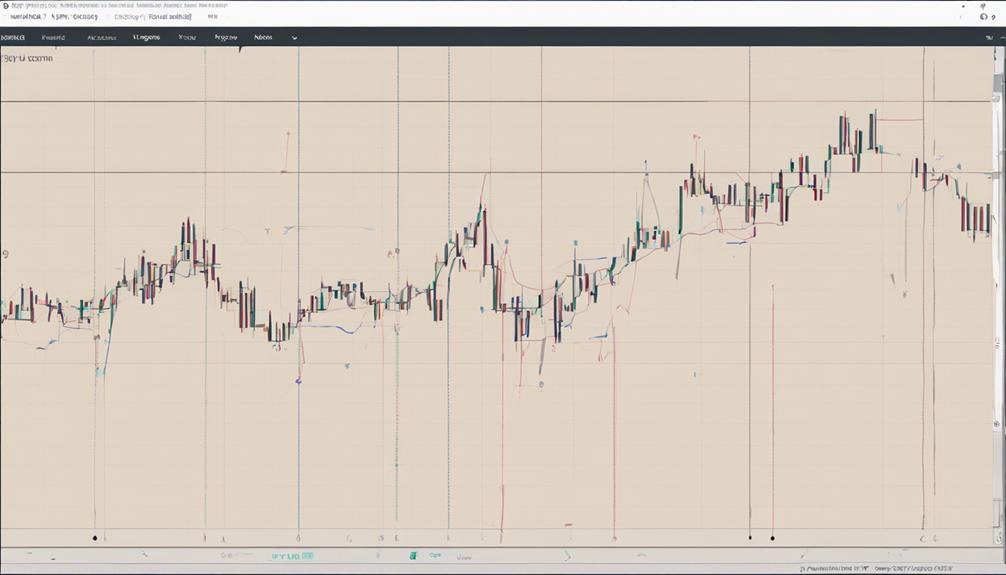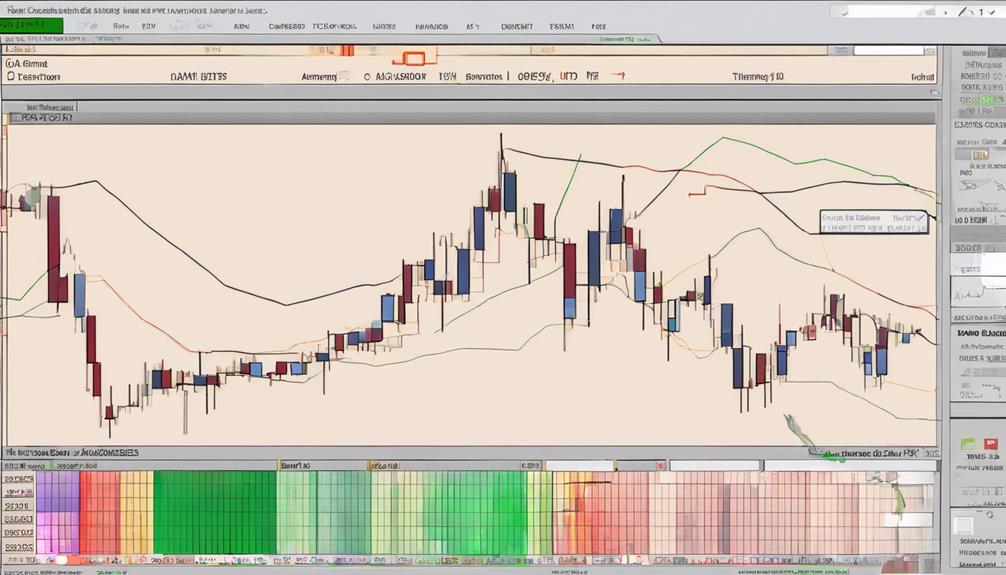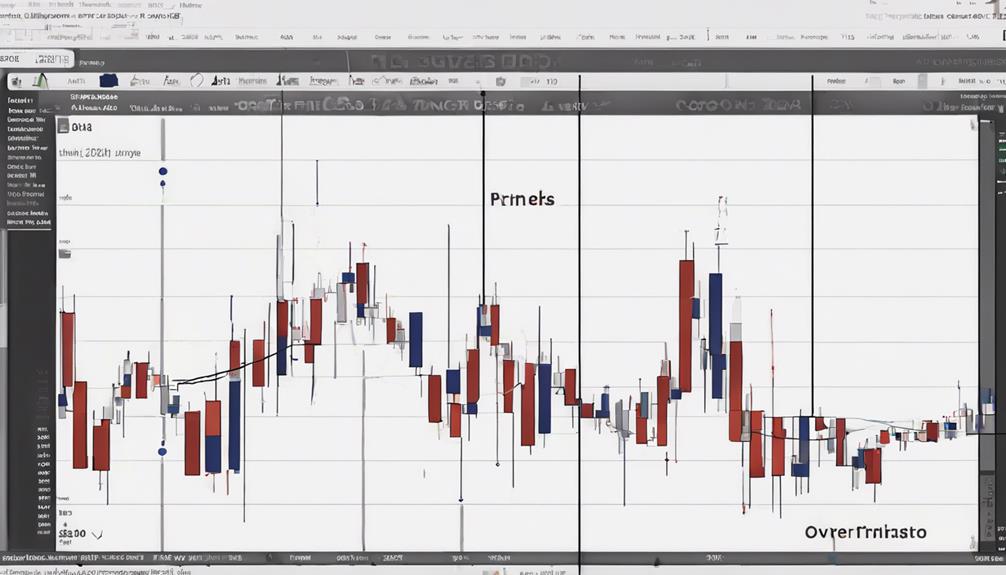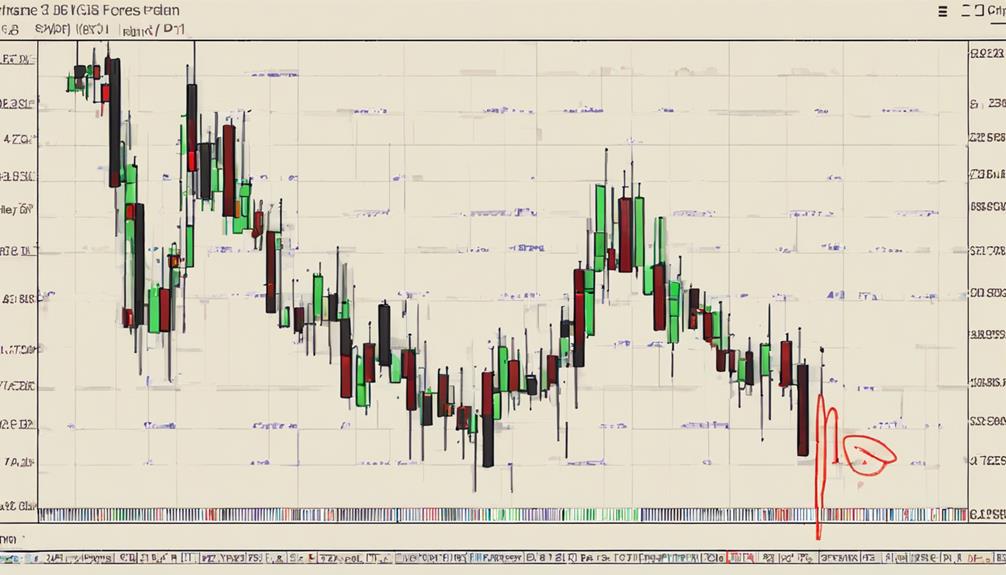When it comes to deciphering the Aroon indicator signals in the realm of Forex trading, you'll find that these signals can unveil a wealth of insights crucial for your trading decisions.
The Aroon indicator isn't just your average tool; its ability to pinpoint trend strength and direction is a game-changer for many traders.
But, how exactly do these signals translate into actionable strategies that can potentially boost your trading performance?
Let's explore the nuances and intricacies of Aroon indicators to uncover the hidden gems that could elevate your trading game to the next level.
Understanding Aroon Indicator Calculation
To understand the Aroon Indicator Calculation, you must grasp the precise formulas used to derive the Aroon Up and Aroon Down values.
The Aroon Up is calculated as (25 – Periods since the 25-period High) / 25 * 100%, while the Aroon Down is calculated as (25 – Periods since the 25-period Low) / 25 * 100%. These values offer insights into the time since the last high or low within a specified period.
Interpreting Aroon Indicator Signals

Interpreting Aroon Indicator Signals involves analyzing the relationship between the Aroon-Up and Aroon-Down values to gauge trend strength and direction in Forex markets. When interpreting Aroon Indicator signals, consider the following:
- Aroon-Up crossing above Aroon-Down suggests a potential uptrend in Forex trading.
- Aroon-Down crossing above Aroon-Up indicates a possible downtrend in Forex.
Readings above 50 on the Aroon Indicator signify bullish trends.
Readings below 50 on the Aroon Indicator indicate bearish trends.
Understanding these relationships can help you make informed decisions when trading Forex based on the Aroon Indicator signals.
Identifying New Trend With Aroon Indicator

Identifying a new trend with the Aroon Indicator involves closely examining the relationship between Aroon-Up and Aroon-Down values to pinpoint potential shifts in price movements within the Forex market. The Aroon Indicator signals the strength and direction of price movements, with Aroon-Up crossing above Aroon-Down indicating a possible uptrend, and vice versa for a downtrend.
Recognizing Consolidation Patterns

Recognizing consolidation patterns in the forex market involves analyzing Aroon indicator signals when both Aroon-Up and Aroon-Down values are below 50. This situation suggests a lack of strong trend direction, indicating potential price consolidation or trading ranges.
When identifying consolidation patterns with Aroon indicators, traders can anticipate breakouts and adjust their strategies accordingly. To recognize consolidation effectively, consider the following:
- Aroon-Up and Aroon-Down values below 50 signal potential consolidation.
- Consolidation patterns often indicate flat prices in the forex market.
- Breakouts may occur after periods of price consolidation.
- Understanding trading ranges can help in navigating price movements during consolidation.
Exploring Aroon Indicator Limitations

When exploring the limitations of the Aroon Indicator in Forex trading, traders must be aware of potential challenges that may arise when using this technical tool.
The indicator may produce late or false signals in choppy markets or volatile conditions, leading to unreliable trading decisions.
Crossovers of Aroon lines don't always result in significant price moves and can expose traders to whipsaws, causing unexpected losses.
Relying solely on the Aroon Indicator without confirming signals through additional analysis is risky, as the tool looks backward based on historical data and trends rather than predicting future price movements.
To enhance signal accuracy and decision-making, traders should consider combining the Aroon Indicator with other technical indicators for a more comprehensive trading strategy.
How Do Aroon Indicator Signals Differ Between Forex and Stocks?
When it comes to calculating Aroon indicator stocks, the signals for forex and stocks can differ. In forex trading, Aroon indicator signals may be more sensitive to short-term price movements, while in stock trading, the signals might reflect longer-term trends. Understanding these differences is crucial for successful trading in both markets.
Frequently Asked Questions
What Does the Aroon Indicator Do?
The Aroon indicator measures time since the last high and low, providing insights into trend strength. Aroon-Up and Aroon-Down indicate periods since highs and lows, helping you gauge trend direction. Look for crossovers and values over 50 for potential market highs or lows.
Is the Aroon Indicator Leading or Lagging?
The Aroon Indicator is a leading tool in Forex trading, not lagging. It helps anticipate trend changes by measuring time since the last high or low. Utilize its signals to stay ahead of market shifts.
How Accurate Is the Aroon Indicator?
In Forex trading, the accuracy of the Aroon indicator varies based on market conditions and timeframe. Aroon-Up surpassing Aroon-Down suggests a potential uptrend, while the opposite indicates a possible downtrend. Use these signals wisely for better decisions.
What Is the Difference Between RSI and Aroon Indicator?
When comparing RSI and the Aroon Indicator, note that RSI gauges price momentum, while Aroon detects trend strength via highs and lows. RSI focuses on price changes, Aroon on time, making them complementary tools in Forex analysis.
Conclusion
In conclusion, the Aroon indicator signals in Forex provide valuable insights into trend strength and direction. By calculating Aroon-Up and Aroon-Down lines, traders can identify bullish or bearish sentiment and potential trend reversals.
Remember, the Aroon indicator is just one tool in your trading arsenal, so always use it in conjunction with other indicators for more accurate analysis. Keep your eyes peeled for crossovers and readings above 50 to catch new trends before they take off.
Happy trading!
